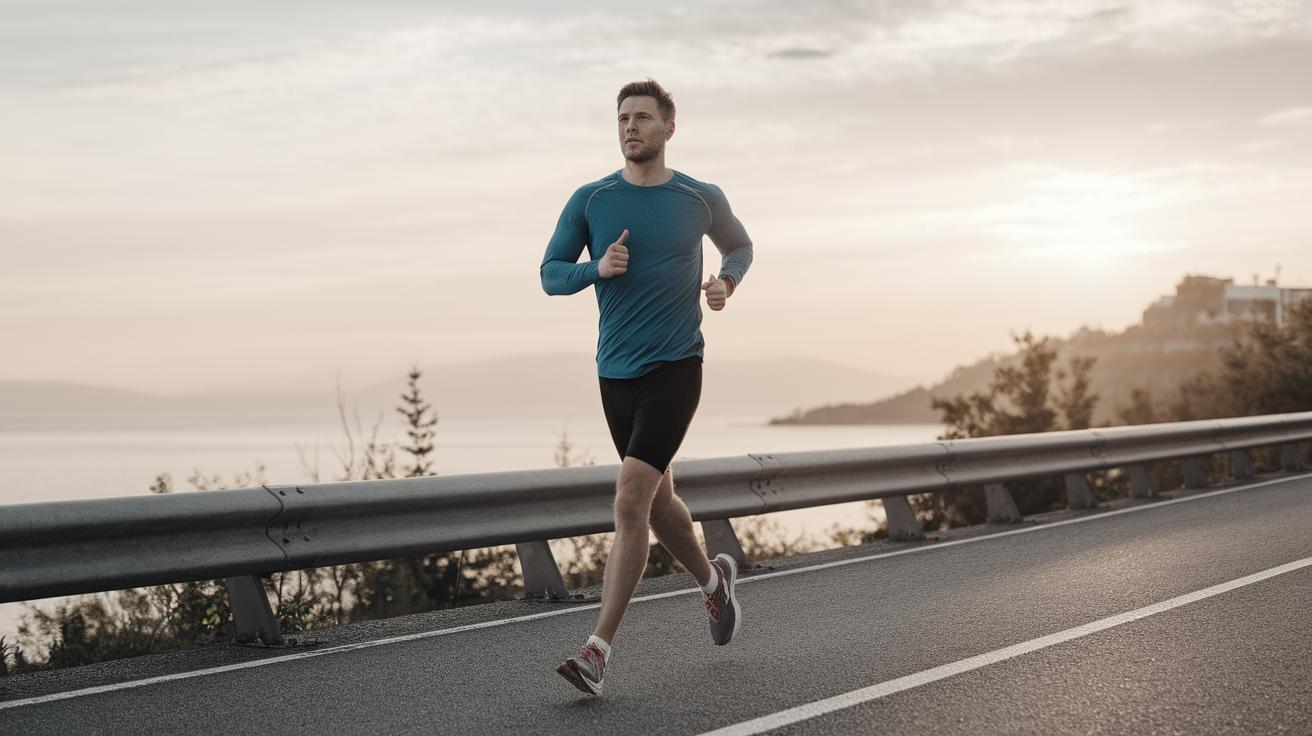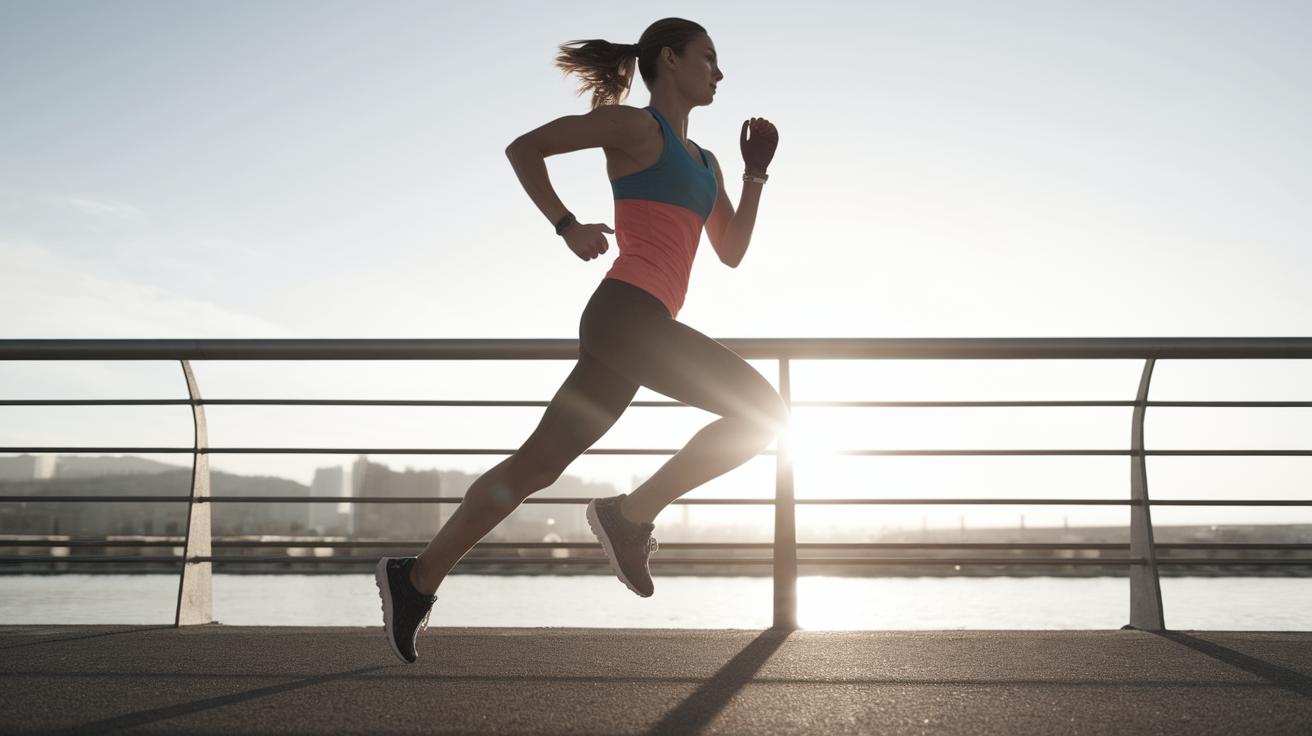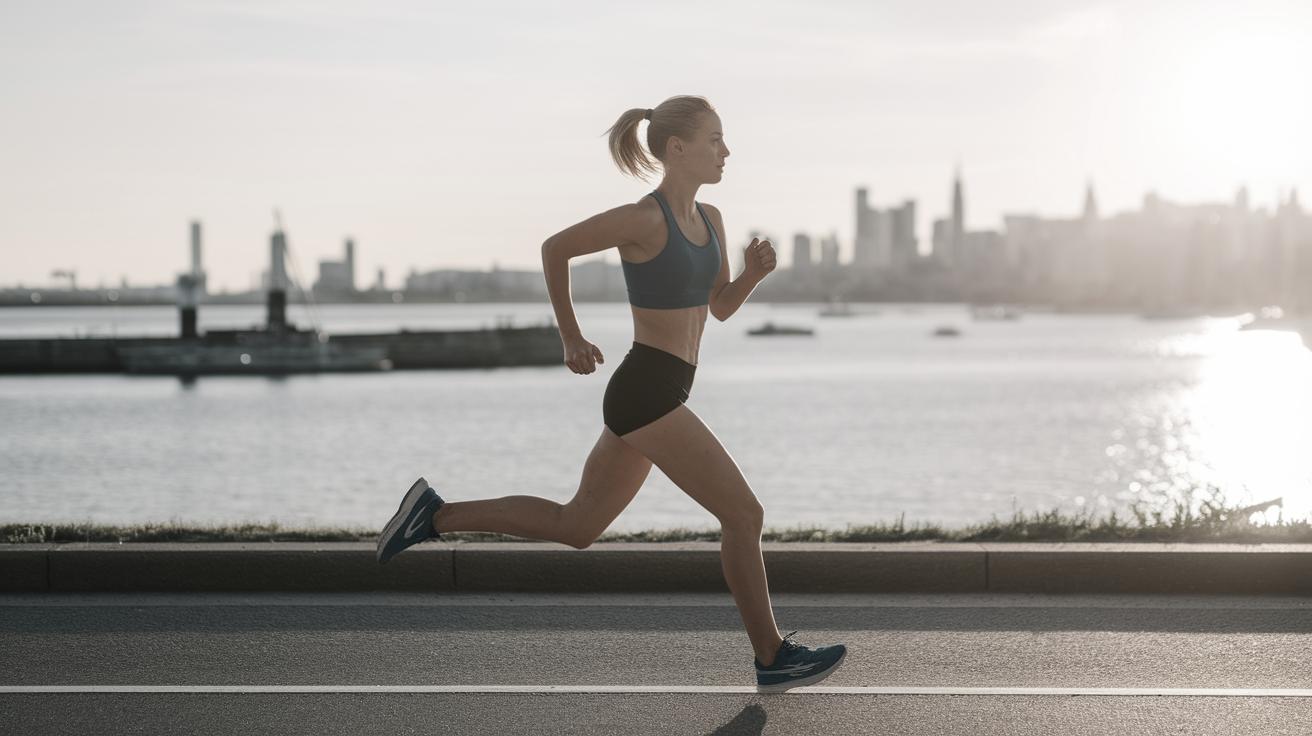Essential Items in a Runner’s Checklist
Whether you are a beginner or a seasoned marathoner, having the right gear can make all the difference in your running experience. This blog post will guide you through the essential items in a runner’s checklist, ensuring you are fully equipped for your journey. From well-fitted shoes to advanced fitness watches and everything in between, each item plays a crucial role in optimizing comfort, performance, and safety. Dive in to explore why these 17 essentials, including socks, sunglasses, and safety gear, should be part of your running routine, helping you step onto the track or trail confidently and efficiently.
Well-Fitted Shoes
Well-fitted shoes are arguably the most critical item in a runner’s checklist. They provide the necessary support, stability, and cushioning to protect your feet from impact. A good pair of running shoes can help prevent injuries such as blisters, shin splints, and plantar fasciitis. It’s essential to get your feet measured and try multiple styles to find the perfect fit.
The technology behind running shoes is ever-evolving, with options tailored for flat arches, high arches, and everything in between. Investing in quality, well-fitted shoes isn’t just about comfort—it’s about enhancing performance. Different running terrains demand different shoe types; for example, trail running shoes have extra grip for navigating natural surfaces, whereas road running shoes are lighter and more streamlined for pavement.
Running Socks
Running socks are often overlooked yet they play an integral role in foot comfort and protection. Unlike regular socks, running socks have moisture-wicking properties that help keep your feet dry, preventing blisters and fungal infections. The best running socks offer a snug fit without too much compression, reducing slippage within the shoe.
Furthermore, running socks come in various materials, from synthetic fibers to merino wool, each offering unique benefits based on weather conditions. A good pair of socks will complement your shoes, enhancing the overall comfort and support for your feet during runs.
Compression Leggings
Compression leggings aren’t just about aesthetics; they provide several physiological benefits that enhance running performance. They offer targeted support and increase blood circulation, which can reduce muscle soreness after intense workouts. Compression leggings also add a layer of protection against the elements, be it cold or sun.
Many runners appreciate the form-fitting nature of compression wear, which reduces chafing and enhances dynamic movements. They are especially beneficial during colder months, as they provide warmth without the bulk, and can be worn alone or under shorts for added comfort.
Moisture-Wicking Tops, Split Shorts, and More
Moisture-wicking tops are crucial for temperature regulation. They draw sweat away from the skin, allowing it to evaporate quickly, which helps prevent overheating and ensures you remain comfortable over long distances. Split shorts offer better airflow, reduce friction and provide a full range of motion, making them a preferred choice for many runners.
Having a variety of moisture-wicking garments, including tank tops and long sleeves, is essential for adapting to different weather conditions. Proper attire enables you to train effectively, regardless of climate, and keeps your focus on the run instead of discomfort.
Compression Sleeves
Compression sleeves for the arms and calves are popular among runners for their benefits in boosting circulation and reducing fatigue. By improving blood flow, they help speed recovery time and decrease muscle soreness, allowing more frequent and intense workouts.
Calf compression sleeves are particularly beneficial for runners who experience discomfort in their lower legs. They provide additional support and reduce the risk of cramps and shin splints, ensuring a more comfortable and sustainable running experience.
Rain Gear
Investing in proper rain gear is essential for maintaining a training routine regardless of weather conditions. Waterproof jackets made with breathable fabrics like Gore-Tex keep you dry while preventing overheating. It’s important to choose lightweight options that won’t add unnecessary weight or bulk.
A good rain jacket should have features like adjustable hoods, ventilation flaps, and reflective elements to improve both functionality and safety. Having the right gear can turn a soggy run into a refreshing and invigorating experience.
Cold-Weather Running Gear
Running in cold weather requires preparation and the right gear to maintain warmth. Thermal base layers, windproof jackets, and insulated gloves are crucial in maintaining body heat without compromising on mobility. Look for gear with strategic layering capabilities to help you regulate temperature.
Additionally, thermal hats and neck gaiters provide protection from wind and cold, targeting areas vulnerable to heat loss. Specialized winter running shoes with extra grip will keep you stable on icy surfaces, ensuring cold weather is not a deterrent to your running routine.
Hats
Hats are a simple yet effective running accessory that provide protection from the sun and retain warmth in cooler temperatures. A well-ventilated cap will shield your face from the sun while allowing heat to escape, keeping you cool.
During cold weather, a thermal hat provides much-needed insulation. Some caps come with reflective elements for improved visibility in low-light conditions, ensuring safety as well as comfort.
Sunglasses
Quality sunglasses are an essential component of a runner’s gear, protecting your eyes from harmful UV rays and glare. Look for glasses with polarized lenses and a snug fit to prevent them from bouncing while you run.
Sunglasses not only enhance visibility by reducing glare but also protect against wind and debris. They are a simple yet effective measure for maintaining eye comfort and protection during any run.
Anti-Chaffing Roll-Ons
Chafing can turn an enjoyable run into a painful ordeal. Anti-chafing roll-ons provide a smooth barrier between your skin and clothing, reducing friction and irritation. Apply them to common problem areas like the thighs, underarms, and chest for optimal comfort.
These products are especially useful during long-distance runs or in hot, humid conditions where sweating is more intense. Compact and easy to carry, they can be quickly applied anytime discomfort begins to surface.
Sunscreen
Protection from the sun’s harmful rays is crucial, no matter the season. Running exposes more skin to the elements, making sunscreen an essential item in your kit. Opt for a broad-spectrum sunscreen with a minimum SPF of 30 for effective protection.
Water-resistant formulas are ideal for runners as they endure sweat and incidental water exposure. Ensure even coverage on all exposed skin to prevent burning and long-term damage.
GPS or Fitness Watch
A GPS or fitness watch offers real-time tracking of your pace, distance, and heart rate. These devices help monitor progress and set training goals, providing valuable data that can optimize your performance.
Advanced models come with features like music storage, guided workouts, and recovery tracking, making them an all-in-one tool for the dedicated runner. They offer insights that help tailor your training to your personal needs and goals.
Water Bottle or Hydration Vest
Staying hydrated is paramount in running, and the right gear can make this effortless. A light, easy-to-carry water bottle or a hydration vest with multiple pockets ensures you are well-hydrated on long runs.
Hydration vests are especially useful for trail runs where access to water sources is limited. They offer convenient storage not just for water, but for other essentials like snacks and keys, allowing you to focus on the run.
Headphones
Music and podcasts can significantly enhance the running experience, making a pair of good-quality headphones highly desirable. Wireless options with secure fits ensure your music or call stays uninterrupted.
Seek models that are sweat-proof and have long battery life to keep pace with you. Additionally, features like ambient noise awareness ensure you stay alert to your surroundings and safe while running.
Running Belts, Arm Bands, and Accessories
Running belts and armbands offer a hands-free way to carry necessities like phones, keys, and energy gels. Ergonomically designed, they reduce bounce and discomfort, providing seamless integration with your workout.
Accessories such as phone holders ensure you have everything within reach, especially during races or long-distance solo runs. Choose options with reflective elements for added visibility.
Safety Gear and Reflective Accessories
Safety cannot be compromised in running. Reflective vests, LED lights, and reflective tape enhance visibility during early morning or late evening runs when visibility is reduced.
Safety whistles or identification bracelets offer additional security in emergencies. Reliable safety gear provides reassurance, allowing you to focus purely on performance.
A Word From Verywell
Every runner’s journey is unique, shaped by individual needs and preferences. Equipping yourself with the right gear is a significant first step toward achieving your running goals. As you build your checklist, consider what best supports your comfort, performance, and safety. Investing in high-quality items not only enhances your running experience but also contributes to a healthier and more fulfilling lifestyle. Don’t forget to regularly assess and update your gear to match your evolving needs and the changing seasons.
Frequently Asked Questions
Q: How often should I replace my running shoes?
A: Running shoes typically last between 300 to 500 miles, depending on the shoe type and terrain. Regularly inspect your shoes for signs of wear and replace them to maintain optimal support and performance.
Q: Can I wear sunglasses for evening runs?
A: Yes, sunglasses with low-light or clear lenses are available for evening runs. These provide eye protection from debris without reducing visibility.
Q: Are compression socks necessary for all runners?
A: Not always. While many runners benefit from the increased circulation and reduced muscle fatigue provided by compression socks, they are optional based on personal preference and specific needs.
| Essentials | Purpose |
|---|---|
| Well-Fitted Shoes | Provides support, stability, and cushioning |
| Running Socks | Prevents blisters and maintains foot comfort |
| Compression Leggings | Enhances blood circulation and reduces muscle soreness |
| Moisture-Wicking Tops | Regulates temperature and keeps body dry |
| Compression Sleeves | Boosts circulation and reduces fatigue |
| Rain Gear | Keeps you dry without overheating during rain> |
| Cold-Weather Gear | Maintains warmth and comfort in cold temperatures |
| Hats | Provides sun protection and retains warmth |
| Sunglasses | Protects eyes from UV rays and enhances visibility |
| Anti-Chaffing Roll-Ons | Prevents skin irritation and chafing |
| Sunscreen | Protects skin from harmful UV rays |
| GPS or Fitness Watch | Monitors pace, distance, and heart rate |
| Water Bottle/Hydration Vest | Ensures hydration during long runs |
| Headphones | Enhances running experience with music or podcasts |
| Running Belts/Arm Bands | Offers hands-free storage for essentials |
| Safety Gear | Enhances visibility and provides safety features |


